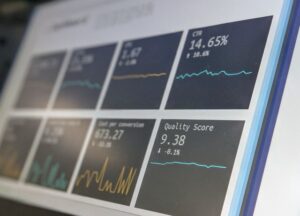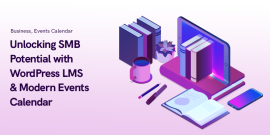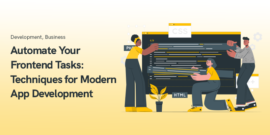
6 Steps To Learn How To Use Storyboarding To Create Better UX Design
UX designers employ various research methods to develop high-end products, including contextual inquiries, interviews, and workshops. Using personas and wireframes, they convey their ideas and conclusions to the rest of the team by turning research results into user stories and flows.
We've all heard about the importance of creating user interviews or creating personas. We all agree that testing is an essential aspect of product creation. On the other hand, storyboarding is seldom used, even though it may be pretty beneficial in various scenarios.
Designers can only produce better things if they know what their customers are going through and how their products can improve their lives. Here, storyboards come into play.
Let's explore the role of storyboarding in UX design.
What Is A Storyboard, And How Does It Help?
Using a storyboard, you may visually depict the progression of a narrative. An event's process and feelings may be captured in a photograph or video. This process was founded in the 1930s by Disney Studios when they employed it to show the flow of a story.
Basically, storyboarding helps us travel through the user journey, like experience mapping, where we unearth insights about many situations in which people engage with our product or design.
In user experience design, storyboarding is a method for visualizing and exploring a user's experience with your product.
It is a lot like watching a movie and following the story to see processes and reactions. By studying how people engage with it, you may have a clearer picture of how to build a compelling story.
Visualization
Visualizing a person's experience helps others grasp it more clearly than just reading about it in writing.
Memorability
According to research, stories are 22 times more memorable than mere facts. Your team will retain more information if you utilize a storyboard to illustrate users' behaviors.
Empathy
Storyboards aid in the development of empathy among team members. When UX designers draw storyboards, they tend to portray the characters' emotions.
Engagement
Storyboarding is a powerful tool for getting your research results in front of a broad audience. Your team will be more interested in the results of your UX study if you give it a human face.
When And Why Do Storyboards Need To Be Created?
After the first brainstorming phase of a project, it's time to create a visual representation of the ideas. One-sentence idea descriptions may be transformed into complex tales using a storyboard.
For a variety of reasons, storyboarding is a fantastic tool. Firstly, storyboards are straightforward for stakeholders to comprehend and thoroughly evaluate.
Storytelling is a great way to spark design ideas and bring teams closer together around a better vision of what is being developed. Everyone can be involved in the process of creation since it's a group effort (not just designers). As in the film business, each scene must be displayed and criticized by the whole crew.
It's not only for these reasons that storyboarding is beneficial, but it may also assist you in identifying areas of improvement. Rather than being a communication tool, storyboarding is a design process.
How To Create A Storyboard: Step-By-Step Guide
A storyboard can be a complex undertaking, to begin with. However, keep in mind that they are the best used as a low-fidelity artifact and don't need a lot of work to construct.
It's essential to follow these six steps for effective storyboarding:
Gather Your Data
The foremost step in designing a storyboard is to select which data sources you will utilize. These include user interviews, usability testing, and site stats.
If you haven't gathered data yet or want to utilize storyboards as a tool for brainstorming, you may create one without it.
Select The Fidelity Level
Sketches may be used during brainstorming sessions to convey a scenario or sequence swiftly. You can even use sticky notes to construct storyboards together in these brainstorming sessions to obtain the input of everyone on the team.
Discuss the timeframe and the actions that the user will follow. Put a sticky note on each step and set it on a whiteboard or a wall as you talk about it.
Don't separate the group into various subgroups with distinct topics that must be aggregated. Instead, focus on one step at a time to keep the discussion informational.
Define The Fundamentals
Define the persona and the situation or user narrative that is being depicted. To prevent your storyboard from being disjointed, make sure every scenario is particular and corresponds to a single user route.
Maintain a one-to-one rule for complicated, multipath scenarios: one storyboard for each path. Several kinds of user journeys will be shown in your storyboards.
Plan Out Steps
Before beginning with the storyboard template, please write down the steps and link them with arrows.
Create Graphics And Add Descriptions To Them
While strong artistic talents might help you produce a storyboard that looks like it belongs in a comic book, they are not a must for creating an effective one.
Bullet points with accompanying captions may communicate extra information. As an additional benefit of low-fidelity drawings or sticky notes, they may be used to sketch out ideas. You should be able to modify your storyboard in subsequent rounds if required.
Distribute And Re-Run The Tests
Distribute your storyboard to your target audience, whether your internal team or project stakeholders and get comments. Iterate over some of these processes if required to enhance the artifact.
Key Takeaways
Hopefully, now all doubts and concerns related to storyboarding have been answered.
In UX design, storyboarding is a great way to bring your ideas to life before you begin brainstorming with your team members. Thanks to these interactive boards, visualizing ideas gets easy, making them easy to pitch.
They provide a more engaging and delightful experience for everyone involved with your e-commerce store via scenario-based visual aids. Over time, it will become evident that you will need more than one storyboard to depict various events.
Recommended Posts

10 Best AI Tools for Event Planners & Businesses in 2025
January 22, 2025





